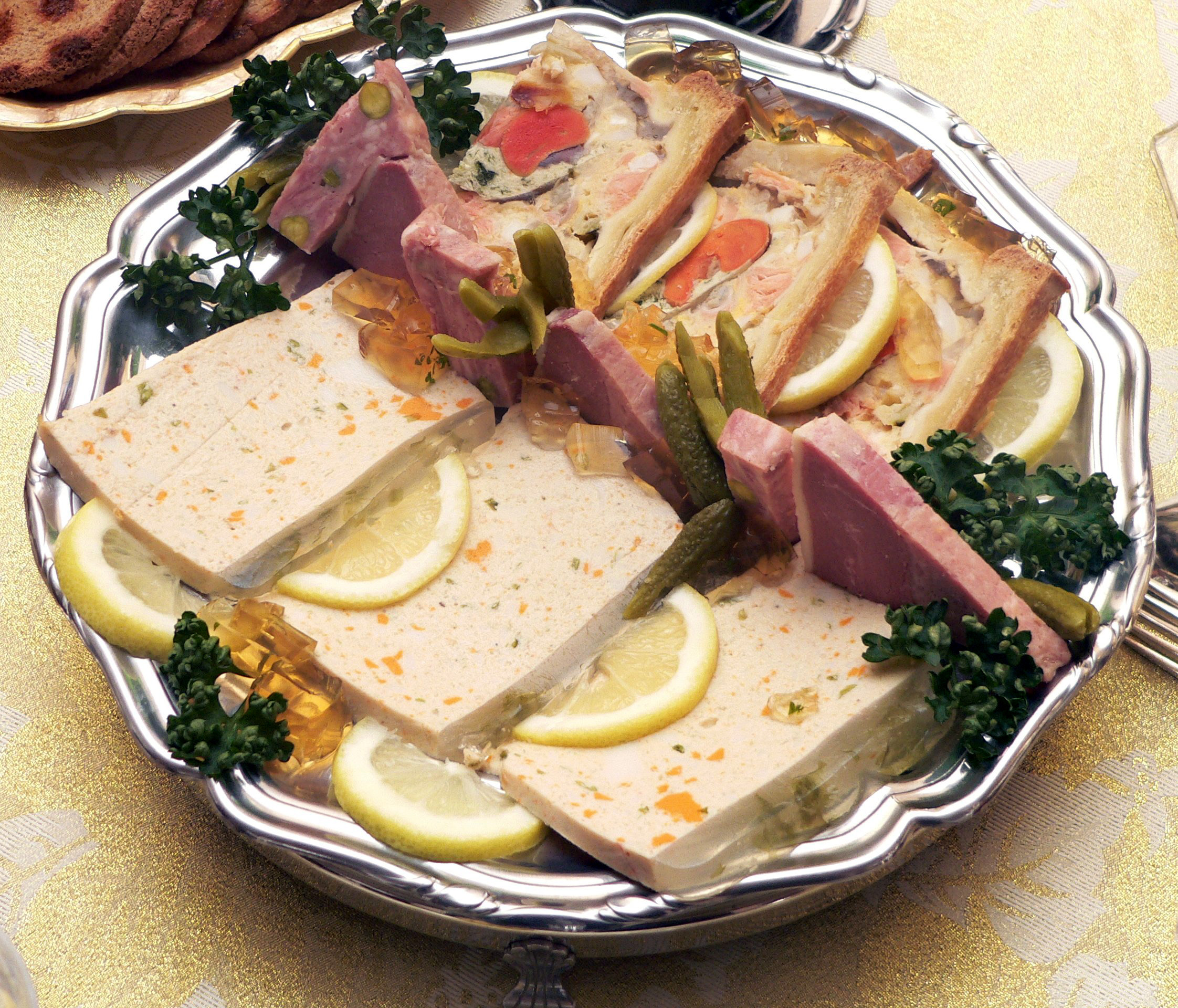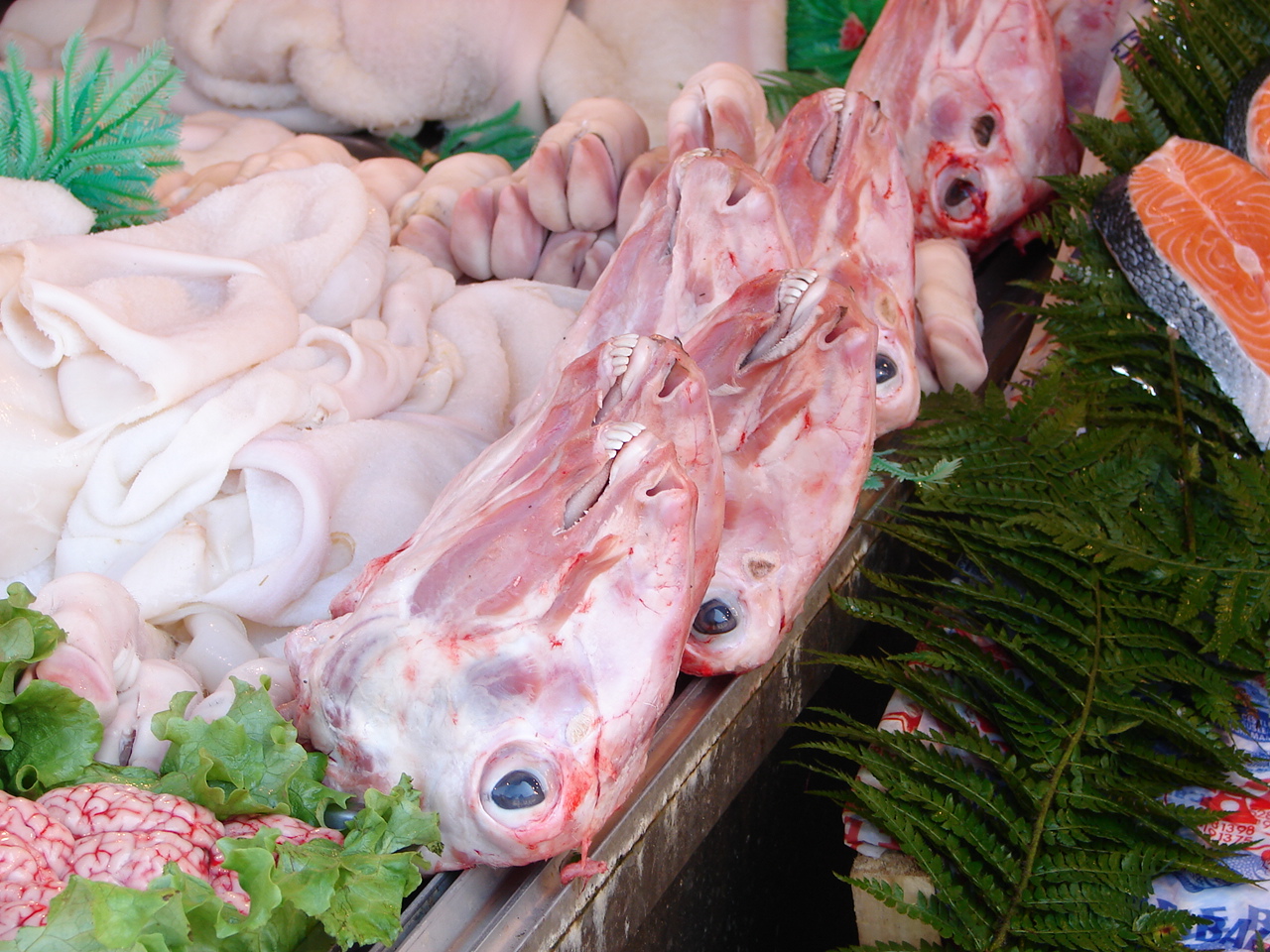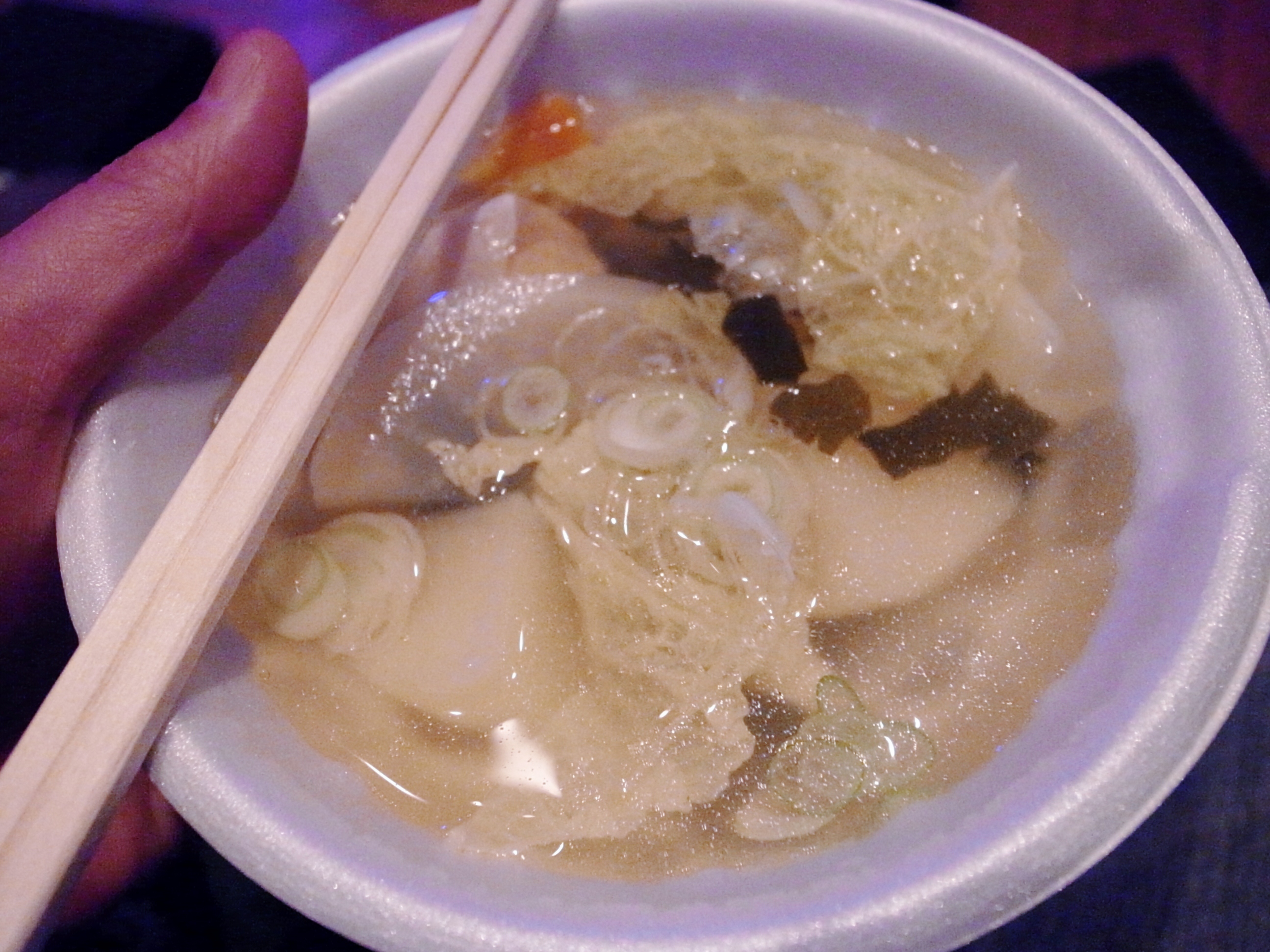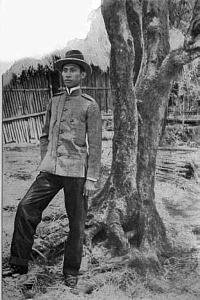|
Dinuguan
''Dinuguan'' () is a Filipino savory stew usually of pork offal (typically lungs, kidneys, intestines, ears, heart and snout) and/or meat simmered in a rich, spicy dark gravy of pig blood, garlic, chili (most often ''siling haba''), and vinegar. Etymology and names The most popular term ''dinuguan'' and other regional naming variants come from their respective word for "blood" (e.g. "dugo" in Tagalog means "blood" hence "dinuguan" as "to be stewed with blood"). Possible English translations include pork blood stew or blood pudding stew. ''Dinuguan'' is also called ''sinugaok'' in Batangas, ''zinagan'' in Ibanag, ''twik'' in Itawis, ''tid-tad'' in Kapampangan, ''dinardaraan'' in Ilocano, ''dugo-dugo'' in Cebuano, ''rugodugo'' in Waray, ''sampayna'' or ''champayna'' in Northern Mindanao and ''tinumis'' in Bulacan and Nueva Ecija. A euphemism for this dish is "chocolate meat". ''Dinuguan'' is also found in the Marianas Islands, believed to have been introduced to the is ... [...More Info...] [...Related Items...] OR: [Wikipedia] [Google] [Baidu] |
Blood As Food
Many cultures consume blood, often in combination with meat. The blood may be in the form of blood sausage, as a thickener for sauces, a cured salted form for times of food scarcity, or in a blood soup. This is a product from domesticated animals, obtained at a place and time where the blood can run into a container and be swiftly consumed or processed. In many cultures, the animal is slaughtered. In some cultures, blood is a taboo food. Blood is the most important byproduct of slaughtering. It consists predominantly of protein and water, and is sometimes called "liquid meat" because its composition is similar to that of lean meat. Blood collected hygienically can be used for human consumption, otherwise it is converted to blood meal. Special fractions of animal blood are used in human medicine. Methods of preparation Sausage Blood sausage is any sausage made by cooking animal blood with a filler until it is thick enough to congeal when cooled. Pig or cattle blood is mos ... [...More Info...] [...Related Items...] OR: [Wikipedia] [Google] [Baidu] |
Offal
Offal (), also called variety meats, pluck or organ meats, is the organs of a butchered animal. The word does not refer to a particular list of edible organs, which varies by culture and region, but usually excludes muscle. Offal may also refer to the by-products of milled grains, such as corn or wheat. Some cultures strongly consider offal as food to be taboo, while others use it as everyday food or even as delicacies. Certain offal dishes—including '' foie gras'', '' pâté'', and haggis —are internationally regarded as gourmet food in the culinary arts. Others remain part of traditional regional cuisine and may be consumed especially during holidays. This includes sweetbread, Jewish chopped liver, U.S. chitterlings, Mexican menudo, as well as many other dishes. On the other hand, intestines are traditionally used as casing for sausages. Depending on the context, ''offal'' may refer only to those parts of an animal carcass discarded after butchering or skinning ... [...More Info...] [...Related Items...] OR: [Wikipedia] [Google] [Baidu] |
Offal
Offal (), also called variety meats, pluck or organ meats, is the organs of a butchered animal. The word does not refer to a particular list of edible organs, which varies by culture and region, but usually excludes muscle. Offal may also refer to the by-products of milled grains, such as corn or wheat. Some cultures strongly consider offal as food to be taboo, while others use it as everyday food or even as delicacies. Certain offal dishes—including '' foie gras'', '' pâté'', and haggis —are internationally regarded as gourmet food in the culinary arts. Others remain part of traditional regional cuisine and may be consumed especially during holidays. This includes sweetbread, Jewish chopped liver, U.S. chitterlings, Mexican menudo, as well as many other dishes. On the other hand, intestines are traditionally used as casing for sausages. Depending on the context, ''offal'' may refer only to those parts of an animal carcass discarded after butchering or skinning ... [...More Info...] [...Related Items...] OR: [Wikipedia] [Google] [Baidu] |
Puto (food)
''Puto'' is a Filipino steamed rice cake, traditionally made from slightly fermented rice dough (''galapong''). It is eaten as is or as an accompaniment to a number of savoury dishes (most notably, ''dinuguan''). ''Puto'' is also an umbrella term for various kinds of indigenous steamed cakes, including those made without rice. It is a sub-type of ''kakanin'' (rice cakes). Description ''Puto'' is made from rice soaked overnight to allow it to ferment slightly. Yeast may sometimes be added to aid this process. It is then ground (traditionally with stone mills) into a rice dough known as ''galapong''. The mixture is then steamed. The most common shape of the ''putuhán'' steamer used in making ''puto'' is round, ranging from in diameter and between deep. These steamers are rings made of either soldered sheet metal built around a perforated pan, or of thin strips of bent bamboo enclosing a flat basket of split bamboo slats (similar to a ''dim sum'' steamer basket). The cover is ... [...More Info...] [...Related Items...] OR: [Wikipedia] [Google] [Baidu] |
Blood Sausage
A blood sausage is a sausage filled with blood that is cooked or dried and mixed with a filler until it is thick enough to solidify when cooled. Most commonly, the blood of pigs, sheep, lamb, cow, chicken, or goose is used. In Europe and the Americas, typical fillers include meat, fat, suet, bread, cornmeal, onion, chestnuts, barley, oatmeal and buckwheat. On the Iberian Peninsula and in Latin America and Asia, fillers are often made with rice. Sweet variants with sugar, honey, orange peel and spices are also regional specialties. In many languages, there is a general term such as ''blood sausage'' (American English) that is used for all sausages that are made from blood, whether or not they include non-animal material such as bread, cereal, and nuts. Sausages that include such material are often referred to with more specific terms, such as ''black pudding'' in English. Africa ''Mutura'' is a traditional blood sausage dish among the people of central Kenya, although recentl ... [...More Info...] [...Related Items...] OR: [Wikipedia] [Google] [Baidu] |
Stew
A stew is a combination of solid food ingredients that have been cooked in liquid and served in the resultant gravy. A stew needs to have raw ingredients added to the gravy. Ingredients in a stew can include any combination of vegetables and may include meat, especially tougher meats suitable for slow-cooking, such as beef, pork, lamb, poultry, sausages, and seafood. While water can be used as the stew-cooking liquid, stock is also common. A small amount of red wine is sometimes added for flavour. Seasoning and flavourings may also be added. Stews are typically cooked at a relatively low temperature (simmered, not boiled), allowing flavours to mingle. Stewing is suitable for the least tender cuts of meat that become tender and juicy with the slow moist heat method. This makes it popular in low-cost cooking. Cuts having a certain amount of marbling and gelatinous connective tissue give moist, juicy stews, while lean meat may easily become dry. Stews are thickened by reduction ... [...More Info...] [...Related Items...] OR: [Wikipedia] [Google] [Baidu] |
Stew
A stew is a combination of solid food ingredients that have been cooked in liquid and served in the resultant gravy. A stew needs to have raw ingredients added to the gravy. Ingredients in a stew can include any combination of vegetables and may include meat, especially tougher meats suitable for slow-cooking, such as beef, pork, lamb, poultry, sausages, and seafood. While water can be used as the stew-cooking liquid, stock is also common. A small amount of red wine is sometimes added for flavour. Seasoning and flavourings may also be added. Stews are typically cooked at a relatively low temperature (simmered, not boiled), allowing flavours to mingle. Stewing is suitable for the least tender cuts of meat that become tender and juicy with the slow moist heat method. This makes it popular in low-cost cooking. Cuts having a certain amount of marbling and gelatinous connective tissue give moist, juicy stews, while lean meat may easily become dry. Stews are thickened by reduction ... [...More Info...] [...Related Items...] OR: [Wikipedia] [Google] [Baidu] |
Black Pudding
, type = , course = , place_of_origin = Great Britain and Ireland , region =England, Ireland, Scotland , associated_cuisine = United Kingdom and Ireland , creator = , year = , mintime = , maxtime = , served = Hot, occasionally cold , main_ingredient = Pork blood, fat, oats, or barley , minor_ingredient = Mint, thyme, marjoram, spices , variations = Drisheen, Sneem Black Pudding, Stornoway black pudding , serving_size = 100 g , calories = , calories_ref = , protein = , fat = , carbohydrate = , glycemic_index = , similar_dish = , , other = Black pudding is a distinct regional type of blood sausage originating in the United Kingdom and Ireland. It is made from pork or beef blood, with pork fat or beef suet, and a cereal, usually oatmeal, oat groats, or barley groats. The high proportion of cereal, along with the use of certain herbs such as pennyroyal, serves to distinguish black pudding from blood sausages eaten in other parts of the world.J ... [...More Info...] [...Related Items...] OR: [Wikipedia] [Google] [Baidu] |
Marianas Islands
The Mariana Islands (; also the Marianas; in Chamorro: ''Manislan Mariånas'') are a crescent-shaped archipelago comprising the summits of fifteen longitudinally oriented, mostly dormant volcanic mountains in the northwestern Pacific Ocean, between the 12th and 21st parallels north and along the 145th meridian east. They lie south-southeast of Japan, west-southwest of Hawaii, north of New Guinea and east of the Philippines, demarcating the Philippine Sea's eastern limit. They are found in the northern part of the western Oceanic sub-region of Micronesia, and are politically divided into two jurisdictions of the United States: the Commonwealth of the Northern Mariana Islands and, at the southern end of the chain, the territory of Guam. The islands were named after the influential Spanish queen Mariana of Austria following their colonization in the 17th century. The indigenous inhabitants are the Chamorro people. Archaeologists in 2013 reported findings which indicated that the ... [...More Info...] [...Related Items...] OR: [Wikipedia] [Google] [Baidu] |
Nueva Ecija
Nueva Ecija, officially the Province of Nueva Ecija ( tgl, Lalawigan ng Nueva Ecija , also ; ilo, Probinsia ti Nueva Ecija; pag, Luyag/Probinsia na Nueva Ecija; Kapampangan: ''Lalawigan/Probinsia ning Nueva Ecija''), is a landlocked province in the Philippines located in the Central Luzon region. Its capital is the city of Palayan, while Cabanatuan, its former capital, is the largest local government unit (LGU). Nueva Ecija borders, from the south clockwise, Bulacan, Pampanga, Tarlac, Pangasinan, Nueva Vizcaya and Aurora. The province is nationally known as the ''Rice Granary of the Philippines'', producing the largest rice yield in the country. History Precolonial era These first settlers included tribes of Ilongots ( Egungot) or Italons, Abaca and Buquids. Settlements were built along the banks following the river's undulations. The Ilongots, meaning people of the forest, were the fierce headhunters and animist tribes who occupied Carranglan and the mountainous terrain of ... [...More Info...] [...Related Items...] OR: [Wikipedia] [Google] [Baidu] |
Itawis Language
Itawis (also ''Itawit'' or ''Tawit'' as the endonym) is a Northern Philippine language spoken by the Itawis people, closely related to the Gaddang speech found in Isabela and Nueva Vizcaya. It also has many similarities to the neighboring Ibanag tongue, while remaining quite different from the prevalent Ilocano spoken in the region and the Tagalog-based Filipino national language. Background Itawis is spoken by the Itawis people of Northern Luzon who inhabit the provinces of Cagayan Valley. Their range is from the lower Chico and Matalag rivers. The language is said to have rooted in the town of Tuao. In many towns by these rivers, Itawis are found with the Ibanags, and speak Ibanag as well, as an example of linguistic adaptation. Speakers of Itawis and Ibanag can easily understand each other because of the close relationship of their languages. The Itawis are linguistically and culturally very closely related to the Ibanag. The Itawis language is classified as a Mal ... [...More Info...] [...Related Items...] OR: [Wikipedia] [Google] [Baidu] |
Poland
Poland, officially the Republic of Poland, is a country in Central Europe. It is divided into 16 administrative provinces called voivodeships, covering an area of . Poland has a population of over 38 million and is the fifth-most populous member state of the European Union. Warsaw is the nation's capital and largest metropolis. Other major cities include Kraków, Wrocław, Łódź, Poznań, Gdańsk, and Szczecin. Poland has a temperate transitional climate and its territory traverses the Central European Plain, extending from Baltic Sea in the north to Sudeten and Carpathian Mountains in the south. The longest Polish river is the Vistula, and Poland's highest point is Mount Rysy, situated in the Tatra mountain range of the Carpathians. The country is bordered by Lithuania and Russia to the northeast, Belarus and Ukraine to the east, Slovakia and the Czech Republic to the south, and Germany to the west. It also shares maritime boundaries with Denmark and Sweden. ... [...More Info...] [...Related Items...] OR: [Wikipedia] [Google] [Baidu] |








